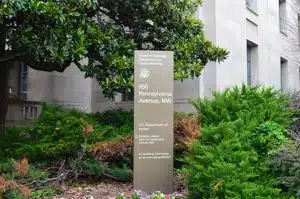(The Center Square) – Republican lawmakers have begun the hard part of implementing the Fiscal Year 2025 budget resolution – resolving the spending and savings differences between House and Senate committees to create a package that enough lawmakers will support.
The House committees on Armed Services, Homeland Security, and Education and Workforce each held markups of their respective budget reconciliation recommendations Tuesday.
Under the $5.8 trillion Republican budget resolution, Armed Services is allocated at least $100 billion to implement President Donald Trump’s defense agenda, while Homeland Security is allowed at least $90 billion to fund Trump’s border security plans.
According to its draft budget bill marked up Tuesday, the Armed Services committee plans to authorize $150 billion in spending. This includes $34 billion to expand the U.S. naval fleet, $25 billion to finance the Golden Dome for America project, $21 billion to restock munitions and increase production capacity, and $13 billion for nuclear deterrence, among other things.
Chairman of the House Armed Services Committee Mike Rogers, R-Ala., told lawmakers during the hearing that an increase in defense spending is “long overdue.”
“We’ve let our defense industrial base atrophy to the point where I fear we could no longer sustain a prolonged conflict,” Rogers said. “And it all stems from chronic underinvestment in our national security.”
The House Committee on Homeland Security’s draft budget bill, focusing on the security of the nation’s borders, would authorize much less spending than Armed Services but fully funds a technologically advanced southern border wall — the “Border Barrier System” — at the cost of $46.5 billion.
Among other things, it would also grant $5 billion to build new Customs and Border Patrol checkpoints and facilities, plus invest roughly $6 billion in the current border agent workforce and new hiring initiatives.
“It is critical that the Republican majority do what the people elected us to do – approve funds for effective border security and enforcement measures. That’s what these recommendations do,” committee Chairman Mark Green, R-Tenn., said during a Tuesday markup meeting.
Unlike the Armed Services and Homeland Security committees, the House Education and Workforce committee must find $330 billion in savings to help offset the cost of extending Trump’s 2017 tax cuts, and it intends to restructure the federal student loan system to do it.
The House Education and Workforce Committee’s 100-page proposed budget bill, named the Student Success and Taxpayer Savings Plan, would significantly reform federal spending on higher education and hold accountable institutions that allow students to take out unaffordable levels of debt.
It would also simplify and shrink student loan repayment options, restricting Pell Grant eligibility to students taking more than six credit hours and expanding eligibility to low-income students in short-term programs.
“Dumping more federal money into a broken system doesn’t mean that system will work,” committee Chairman Tim Walberg, R-Mich., told committee members Tuesday. “This bill set forth by Committee Republicans not only would save taxpayers over $330 billion but also bring much-needed reform.”
Most notably, the bill would get rid of former President Joe Biden’s 2023 SAVE loan repayment program, which effectively amounted to complete loan forgiveness of billions of dollars for thousands of student borrowers. The 8th U.S. Circuit Court of Appeals struck down the repayment plan in February, The Center Square reported.
The nonpartisan Committee for a Responsible Federal Budget, while condemning Republican plans to spend trillions in the final budget package, praised the Education and Workforce committee’s savings blueprint.
“The Education and Workforce Committee has put forward a package of thoughtful and money-saving reforms that will begin to rationalize federal student loan programs while helping to reduce the cost and improve the quality of higher education,” CRFB President Maya MacGuineas said. “This package – or something like it – should be enacted into law.”



















































